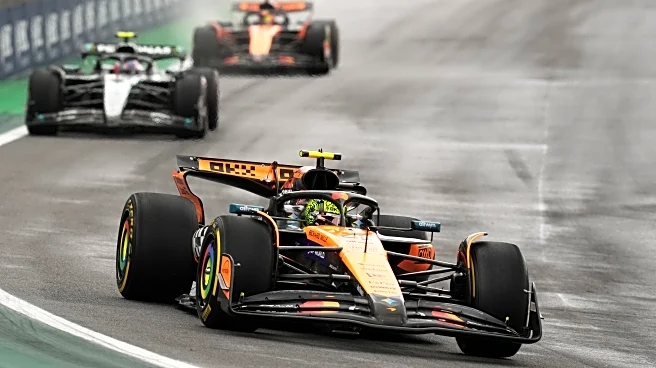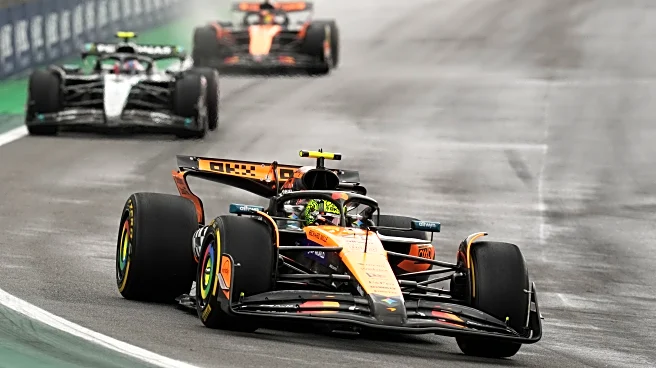What's Happening?
Oscar Piastri's championship aspirations took a significant hit during the Sao Paulo Sprint as he crashed into the barrier. The incident occurred on Lap 7 when Piastri's McLaren drifted onto the kerb at Turn
3, causing a spin due to the slick surface. This resulted in his car crashing into the wall, forcing him out of the Sprint. The conditions at Interlagos were challenging, with parts of the track being damp and slippery, complicating the search for a dry racing line. Similar incidents affected other drivers, including Nico Hulkenberg and Franco Colapinto, who also found themselves in the barrier after hitting the kerb. The accumulation of debris led to a red flag, temporarily halting the session.
Why It's Important?
Piastri's crash is a setback in the tightly contested championship race, where every point is crucial. The loss of potential points from the Sprint could impact his standing in the championship, affecting his chances of securing a top position. The incident highlights the challenges drivers face in adapting to changing track conditions, which can significantly influence race outcomes. For McLaren, Piastri's exit from the Sprint may affect their overall team performance and strategy in the championship. The red flag and subsequent session halt also underscore the importance of safety measures in motorsport, ensuring driver safety in adverse conditions.
What's Next?
The immediate consequence for Piastri is the need to regroup and focus on upcoming races to recover lost points. McLaren will likely analyze the incident to improve strategies and car setup for future races, especially in similar track conditions. The championship battle remains open, with Piastri needing strong performances in subsequent races to remain competitive. Other teams and drivers will also be assessing their strategies to capitalize on Piastri's misfortune and gain an advantage in the standings.
Beyond the Headlines
The incident raises questions about track safety and the impact of weather conditions on race strategy. It may prompt discussions within the motorsport community about improving track design and maintenance to minimize risks associated with wet conditions. Additionally, the crash could influence future decisions on race scheduling and track preparation, emphasizing the need for adaptability in race planning.













